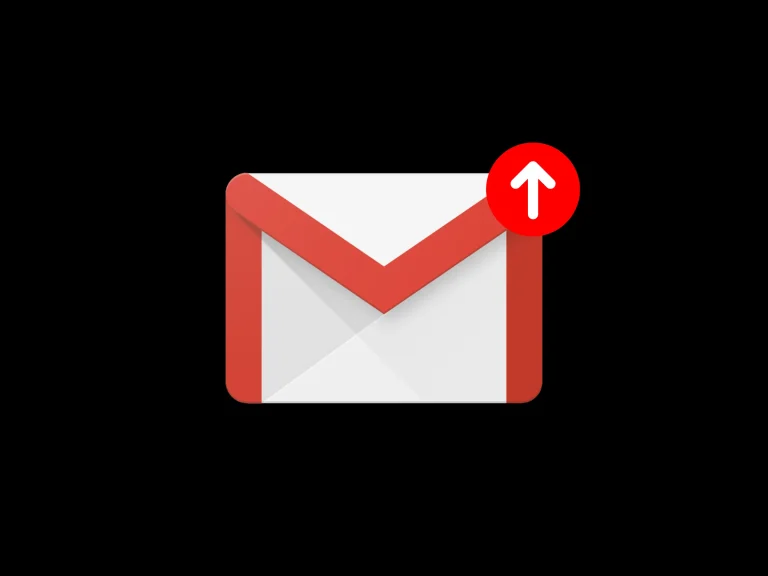
Google Maps has become an indispensable tool for navigation and local discovery. For businesses, appearing accurately on Google Maps is crucial for visibility and attracting customers. But have you ever wondered where Google gets all that detailed information about businesses – from their operating hours and phone numbers to service options and user reviews? And more importantly, how reliable is this data?
The Core of Business Information: Google Business Profile 🏢
The single most significant source of business information for Google Maps is the Google Business Profile (GBP), formerly known as Google My Business. This free platform allows business owners to create and manage their online presence across Google, including Search and Maps.
-
Direct Input from Businesses: When a business owner claims or creates a GBP listing, they can directly provide a wealth of information:
- Business Name: The official, recognized name of the business.
- Category: Specific categories that describe what the business does (e.g., „Italian Restaurant,” „Plumber,” „Book Store”).
- Address: The precise physical location, crucial for map placement and local search.
- Service Area: For businesses that serve customers at their locations (e.g., electricians, cleaning services), they can define their operational radius or specific areas.
- Hours of Operation: Regular business hours, special hours for holidays, and temporary closures.
- Phone Number: Primary contact number.
- Website Link: A direct link to the business’s official website.
- Services/Products: Detailed lists of services offered or products sold, often with descriptions and prices.
- Attributes: These provide nuanced details, such as „Wheelchair accessible entrance,” „Free Wi-Fi,” „Outdoor seating,” „Appointment required,” „Identifies as women-owned,” etc. These attributes have become increasingly granular.
- Photos and Videos: Business owners can upload images of their storefront, interior, products, and team.
- Business Description: A summary of what the business offers.
- Opening Date: When the business first opened.
Google heavily relies on this first-party data because, theoretically, the business owner is the most authoritative source for their own information.
-
Verification Process: To ensure the legitimacy of businesses claiming profiles, Google employs various verification methods. These can include:
- Postcard Verification: Google mails a postcard with a unique verification code to the business’s physical address. This is a common method to confirm the location.
- Phone Verification: For some businesses, verification can be done via a phone call or SMS to the business number.
- Email Verification: If a business uses an email address with a domain matching their website (e.g., [email protected]).
- Video Verification: This may involve a live video call to show the business location, signage, equipment, or business registration documents.
- Bulk Verification: For businesses with 10 or more locations.
This verification step is crucial for establishing a baseline of trust in the data provided directly by businesses. You can learn more about managing your business information directly from Google’s Business Profile Help pages.
Third-Party Data Aggregators 💾
While GBP is primary, Google also licenses data from various third-party data aggregators. These companies specialize in compiling vast databases of business information from numerous sources, including:
- Public records (business registrations, government filings)
- Phone directories
- Industry-specific databases
- Credit reporting agencies
- Online directories and listings
- Chambers of Commerce
Prominent data aggregators (historically and currently, though the landscape evolves) include companies like Factual (now part of Foursquare), Data Axle (formerly Infogroup), and Neustar Localeze. Google uses this data to:
- Discover new businesses that haven’t yet created a GBP.
- Cross-reference and corroborate information provided through GBP. If a business owner updates their hours on GBP, but multiple aggregators show different hours, Google’s algorithms might flag this for review or seek further confirmation.
- Fill in gaps in existing listings where a business owner may not have provided complete information.
The quality and freshness of data from these aggregators can vary. Some are very diligent about updates, while others might have older, less accurate information. This is why Google uses them as one of many signals, not the sole source of truth.
User-Generated Content (UGC) and Community Input ✍️👥
Google Maps is not a static platform; it’s a dynamic ecosystem heavily influenced by its users. This user-generated content (UGC) is a powerful source for both new information and corrections:
-
„Suggest an edit” Feature: Any Google Maps user can suggest edits to a business listing. This could be:
- Correcting a wrong phone number or website.
- Updating business hours.
- Marking a business as permanently closed or moved.
- Changing the map pin location if it’s incorrect.
- Adding missing information like accessibility features.
These suggestions are then reviewed by Google, often using algorithms and sometimes human moderators, especially for contentious edits or businesses with high traffic. Verified Local Guides (users who contribute frequently and gain points) may have their edits approved more quickly.
-
Reviews and Ratings: Customer reviews provide qualitative data about a business’s services, atmosphere, and quality. While not directly „factual” data like hours, reviews can contain mentions of specific services, amenities, or even current operational statuses (e.g., „Tried to go today, but they were closed for renovation”). Google’s AI can parse review text for such contextual clues.
-
Questions & Answers (Q&A): Users can ask questions directly on a business’s Google Maps listing, and the business owner or other users can answer. This often surfaces practical information not found elsewhere (e.g., „Do you have parking?” „Are dogs allowed?”).
-
Photo and Video Uploads by Users: Customers often upload photos of the business, food, products, or menus. These images can provide visual confirmation of attributes, current offerings, or even the business’s appearance, which can be compared against Street View or owner-uploaded photos.
-
Popular Times and Visit Duration: This data is generated from aggregated and anonymized location history data from users who have opted to share it. It helps estimate how busy a place typically is at different times and how long people usually stay. This isn’t about what the business is, but how it’s experienced.
The „wisdom of the crowd” can be incredibly effective at keeping information fresh and identifying errors quickly. However, it’s also susceptible to misinformation, both accidental and intentional (e.g., fake reviews or malicious edits).
Google’s Own Data Collection Efforts 🚗📡
Google invests heavily in its own data gathering initiatives to map the physical world and collect business-related information:
-
Street View Imagery: The iconic Google Street View cars, equipped with panoramic cameras, GPS, and LiDAR scanners, capture street-level imagery. This imagery is not just for visual navigation; it’s analyzed to:
- Identify storefronts and signage: AI can read business names, addresses, and sometimes even phone numbers or hours posted on doors/windows.
- Verify business existence and location: Confirming that a business listed at a particular address physically exists.
- Observe attributes: Noting things like outdoor seating, an entrance ramp, or parking availability.
-
Satellite and Aerial Imagery: High-resolution satellite and aerial photos provide a broader context of a business’s location, its building footprint, parking lots, and surrounding area.
-
Mobile Location Data (Anonymized and Aggregated): For users who have opted into Google Location History, this anonymized and aggregated data helps Google understand real-world movement patterns. This can:
- Help infer business hours based on when people are actually visiting.
- Contribute to „popular times” data.
- Identify new or closed businesses based on changes in foot traffic patterns to a location.
- Refine map accuracy by correlating GPS data with known business locations.
-
„Ground Truth” Operations: In some cases, Google employs human operators or contractors to physically visit areas or make calls to verify information, especially in regions with less available digital data or for high-priority listings.
Business Websites and Online Presence 🌐
Google’s web crawlers (like Googlebot) continuously scour the internet, including business websites. If a business has a website, Google will crawl it to extract information such as:
- NAP Data (Name, Address, Phone Number): Consistency in NAP information across a business’s website and its GBP is a strong signal of accuracy.
- Operating Hours: Often listed on contact or homepage.
- Services and Products: Detailed descriptions on service pages.
- Schema Markup: Businesses can use structured data markup (like Schema.org) on their websites to explicitly tell search engines about their business details. This is a highly reliable signal for Google. Find out more about structured data at Schema.org.
Discrepancies between a business’s website information and its GBP listing can sometimes cause confusion or lead Google’s algorithms to favor one over the other, or flag the listing for review.
Official and Public Data Sources 🏛️
For certain types of information, especially foundational data like legal business names or official registration details, Google may consult:
- Government business registries: Where businesses are legally registered.
- National postal service databases: For address validation.
- Publicly available official listings: From municipal or regional authorities.
These sources are generally considered highly authoritative for the specific data points they cover, though they may not be as up-to-date with operational details like opening hours.
How Reliable is Google Maps Business Data? The Accuracy Challenge 🎯❓
Given the multitude of sources, the question of data accuracy is complex. Google strives for high accuracy, but it’s an ongoing battle.
Factors Influencing Accuracy:
- Business Proactiveness: Businesses that actively manage their Google Business Profile, keep information updated, and respond to user feedback tend to have the most accurate listings.
- Data Freshness: Business details change frequently – hours, services, even locations. The biggest challenge is keeping up with these changes in near real-time. An unmanaged GBP for a business that has moved is a prime example of inaccurate data.
- Source Conflicts: When different sources provide conflicting information (e.g., GBP says open 9-5, a data aggregator says 10-6, and user edits suggest 9-4), Google’s algorithms must decide which is most likely correct. This can sometimes lead to errors.
- Malicious Edits and Spam: Competitors or malicious actors might intentionally submit incorrect information or create fake listings. While Google has systems to detect and combat spam, some inevitably slips through. Local SEO experts often discuss the ongoing fight against map spam.
- User Error: Well-intentioned users can accidentally submit incorrect edits.
- Algorithmic Interpretation: While powerful, AI can sometimes misinterpret data from images (like Street View) or text.
- Lag in Updates: Even when correct information is submitted, there can be a processing lag before it appears live on Google Maps.
Google’s Efforts to Maintain Accuracy:
- Sophisticated Algorithms: Machine learning models analyze various signals to weigh the trustworthiness of different data sources and detect anomalies.
- Human Review Teams: Google employs human operators to review flagged edits, resolve conflicts, and combat spam, particularly for sensitive or high-impact changes.
- Community Moderation: The Local Guides program incentivizes users to provide accurate contributions and report errors.
- Feedback Loops: Encouraging businesses and users to report inaccuracies helps Google identify and fix problems.
- Cross-Referencing: Constantly comparing data from multiple sources to find consensus or flag discrepancies.
How Accurate Is It, Realistically?
While there’s no definitive overall percentage, Google Maps data is generally quite accurate for active and well-managed businesses in digitally well-covered areas. For many common searches, the information is reliable enough for daily use.
However, inaccuracies are not uncommon, especially for:
- Smaller businesses with less online presence.
- Businesses in less digitally mapped regions.
- Newly opened or recently closed/moved businesses.
- Businesses that don’t actively manage their GBP.
- Highly specific attributes that change frequently (e.g., „Masks required” during a pandemic).
A study by Milestone Research (though specific figures change over time) indicated that while core NAP data is often accurate, details like hours and attributes can have higher error rates if not actively managed. The key takeaway is that accuracy is dynamic and varies significantly.
The User’s and Business’s Role in Data Quality ✅
Both users and business owners play a vital role in the accuracy of Google Maps:
-
For Businesses:
- Claim and fully populate your Google Business Profile. This is the most important step.
- Regularly review and update your information, especially hours, services, and contact details.
- Respond to user reviews and Q&A.
- Encourage customers to leave reviews and suggest accurate edits if they spot issues (but never incentivize reviews for misleading purposes).
- Ensure your official website has consistent and correct information, ideally with schema markup.
-
For Users:
- Utilize the „Suggest an edit” feature when you encounter incorrect information.
- Answer questions in the Q&A section if you know the answer.
- Leave informative reviews and upload helpful photos.
- Be critical: if something seems off, try to verify from another source if it’s crucial.
Conclusion: A Collaborative Ecosystem for Business Data
Google Maps obtains its vast repository of business information from a complex interplay of sources: direct input via Google Business Profile, large-scale third-party data aggregators, invaluable user-generated content, Google’s own ambitious data collection initiatives like Street View, and information crawled from business websites and public records.
While Google employs sophisticated algorithms and human oversight to strive for the highest possible data accuracy, it’s a continuous and challenging endeavor. The reliability of information can fluctuate based on how actively a business manages its online presence and how engaged the user community is in providing updates and corrections. Ultimately, the accuracy of Google Maps business data is a testament to a collaborative ecosystem, where Google’s technology, business owners’ diligence, and user contributions all play critical roles in shaping this essential digital resource.














